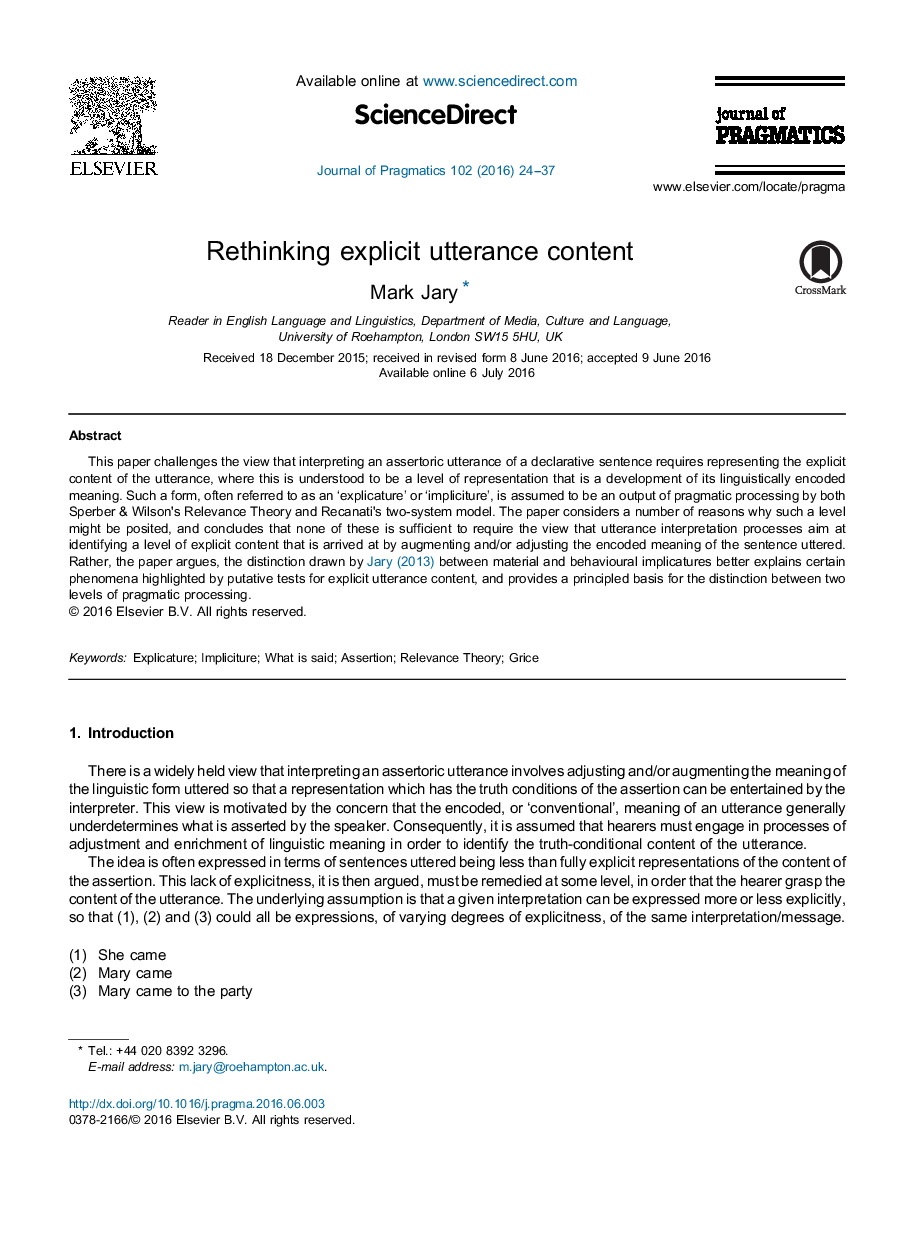| Article ID | Journal | Published Year | Pages | File Type |
|---|---|---|---|---|
| 932460 | Journal of Pragmatics | 2016 | 14 Pages |
•Challenges the idea that utterance interpretation aims at identifying explicit content.•Offers an alternative account of the scope test.•Develops the distinction between material and behavioural implicatures.
This paper challenges the view that interpreting an assertoric utterance of a declarative sentence requires representing the explicit content of the utterance, where this is understood to be a level of representation that is a development of its linguistically encoded meaning. Such a form, often referred to as an ‘explicature’ or ‘impliciture’, is assumed to be an output of pragmatic processing by both Sperber & Wilson's Relevance Theory and Recanati's two-system model. The paper considers a number of reasons why such a level might be posited, and concludes that none of these is sufficient to require the view that utterance interpretation processes aim at identifying a level of explicit content that is arrived at by augmenting and/or adjusting the encoded meaning of the sentence uttered. Rather, the paper argues, the distinction drawn by Jary (2013) between material and behavioural implicatures better explains certain phenomena highlighted by putative tests for explicit utterance content, and provides a principled basis for the distinction between two levels of pragmatic processing.
